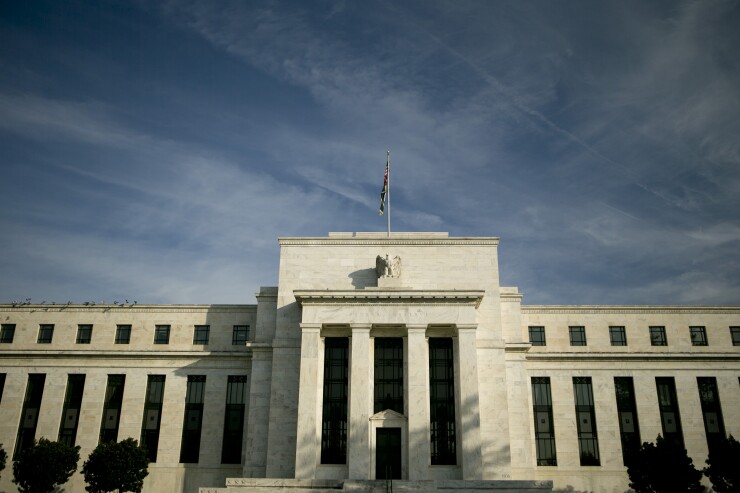
A deluge of fresh bank bonds is poised to sweep corporate debt markets, with some on Wall Street anticipating an uptick in sales as regulators weigh tougher regulatory standards.
The six biggest banks in the U.S. are expected to sell between $28 billion and $32 billion of new bonds after they report quarterly earnings, according to JPMorgan Chase. Regional banks, meanwhile, may eventually have to issue some $168 billion of holding-company debt to meet higher capital requirements, Bloomberg Intelligence said.
JPMorgan, Citigroup and Wells Fargo could be among the first to test investor appetite with fresh debt after they post results Friday.
"Banks spreads are near their recent tights, yields are attractive for investors, and there's been a scarcity of recent issuance," said Jon Curran, a money manager at Principal Asset Management. "Those criteria could present ripe conditions conducive for bank issuance."
A wave of bank bond sales in the second half would help make up for sluggishness earlier in the year amid a series of regional lender collapses and concern about an economic downturn.
Financial institutions, which are typically some of the biggest sellers of corporate bonds in the U.S., issued just $289 billion of the securities so far in 2023 — representing roughly 40% of investment-grade volume, according to data compiled by Bloomberg. That compares with $394 billion sold in the same period a year earlier.
Now, though, investors are growing more confident that the Federal Reserve will soon be able to end its most aggressive monetary tightening cycle in a generation as inflation ebbs. At 3% last month, U.S. consumer price inflation is just one-third of the level it reached a year ago, which was the highest in four decades.
Volatility triggered by regional bank turmoil, as well as UBS Group AG's takeover of Credit Suisse Group AG, has also largely dissipated. Barclays Plc analysts including Peter Troisi said that and easing conditions should help the biggest U.S. banks to tap markets and resume long-term issuance trends.
As long as major lenders "report good earnings, spreads come back in and debt capital markets desks have a good sense that there's a lot of dry powder out there, they could easily upsize their targets," CreditSights Inc. strategist Jesse Rosenthal said.

Potential bond sales from regional lenders are also in focus as the banking industry's earnings season kicks off and regulators consider harsher regulations.
The questions for regional firms are whether and when those potential requirements go into effect. Should banks need greater total loss-absorbing capacity, some lenders will eventually need to start tapping debt markets, said Bloomberg Intelligence's Arnold Kakuda and Nicholas Beckwith.
Midsize lenders such as Citizens Financial Group, M&T Bank and KeyCorp could each face a potential $12 billion to $14 billion shortfall in their so-called TLAC requirements that forces them to tap markets, the analysts wrote. Larger regional banks including U.S. Bancorp, PNC Financial Services Group and Truist Financial have become more frequent issuers to meet potential shortfalls, according to Bloomberg Intelligence.
Representatives for M&T and Truist didn't respond to requests for comment. Spokespeople for Citizens, U.S. Bancorp, PNC and KeyCorp declined to comment.
"U.S. regional banks may be more-active bond issuers to meet the Federal Reserve's new debt requirements," the Bloomberg Intelligence analysts wrote. "Increased debt issuance may be a negative technical for regional banks whose bond spreads have already been pushed wider by this year's banking turmoil."
—With assistance from Michael Gambale





